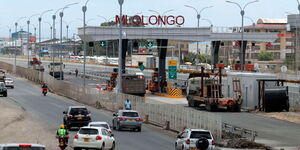Kenya’s private sector has recorded its lowest rate of growth since June 2024, largely driven by high inflation and political unrest.
In the latest Stanbic Performance Managers Index (PMI) report released on Tuesday, August 5, Kenya’s PMI stood at 46.8, a decrease from 48.6, as business activity slowed down for the third consecutive month.
“The PMI dropped for the third consecutive month in July and was further below the 50.0 neutral threshold,” the report read.
“At 46.8, down from 48.6 in June, the index signalled a solid downturn in the health of the private sector economy,” it added.
Aside from the two, the dip in business activity was occasioned by weaker order inflows and rising price pressures.
The downturn led to a marked reduction in input purchases and a slight dip in inventories, with the decline largely concentrated in the manufacturing and services sectors, conflicting with higher output across agriculture, construction, wholesale, and retail.
Total new orders also declined, and at the sharpest rate for 12 months. According to survey participants, orders fell due to reduced customer spending power, higher prices, and political protests leading to lower footfall.
As a result, businesses reportedly curbed their output because of lower sales volumes, cash flow problems, political unrest, and accelerating inflationary pressures.
Input cost inflation rose during July, driven by a steep increase in fuel prices as well as higher tax payments, according to respondents.
Notably, overall cost burdens increased at the fastest pace in seven months. Several firms opted to pass through higher costs to customers, resulting in a solid rise in selling prices that was the most marked since the start of the year.
The dip also meant that Kenyans were on the receiving end of lay-offs from their places of work.
Aside from the job losses, the seasonally adjusted Employment Index dropped to its lowest in six months and was only fractionally above the 50.0 neutral value. A decreasing seasonally adjusted Employment Index is a key indicator of a struggling economy and a deteriorating job market.
Despite the lay-offs, Kenyan businesses still signalled nearly stable employment levels at the beginning of the third quarter of 2025, with some taking on additional staff to assist with new projects and busy workloads.












